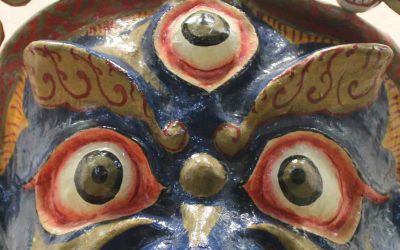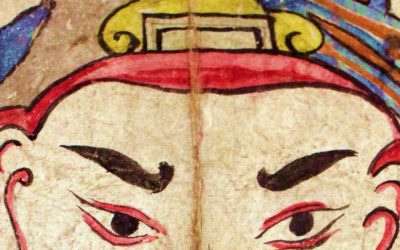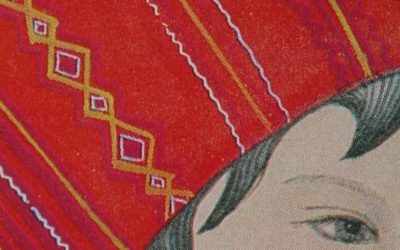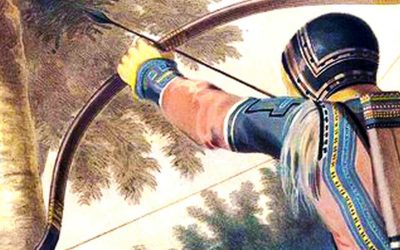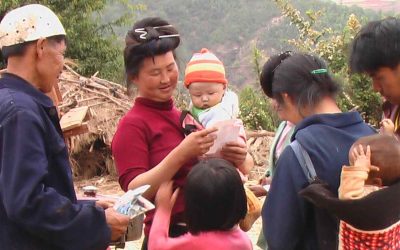Tibetans, the people who descend from the monkey
According to an ancient myth, the Tibetans originated from the union of an ogress (raksasi) and a monkey. The monkey was sent by Avalokitesvara, Mother Buddha, to sow the seed of Buddhism in these lands.
One day, an ogress approached the monkey and tried to tempt him to marry her. At first the monkey refused, but the ogress continued:
«If you do not marry me, I will become the wife of a devil and give birth to countless children and grandchildren. In future times this plateau will become a world full of devils and thousands of people will be killed. So please do as I have told you.»
Full of doubts, the monkey consulted Avalokitesvara on how he should act, who replied that such a marriage was his destiny and a good deed for Tibet. So they finally married and had five children who learned to speak, lost their tails and became the ancestors of the Tibetan people.
This story is very popular in Tibet, found in myths, legends and wall paintings. Its reflection has remained forever in toponymy, for the name Tsetang, the place where its kings are said to have originated and its most ancient spiritual center, means in Tibetan «the place where monkeys play».
It is curious to note that long before Charles Darwin formulated his theories of evolution in which it is affirmed that man descends from the monkey, in some lands the intuition of this phenomenon already existed.
Last posts
Mask of the Protector Palden Lhamo
Mask of the Protector Palden Lhamo Palden Lhamo is one of the main protector deities of Tibetan Buddhism. Among her many roles, she is the special protector of the city of Lhasa, the Gelugpa order of Tibetan Buddhism, and the Dalai Lamas of Tibet. She was invited to...
«Dujie» (Initiation Rite) Masks of the Yao people
"Dujie" (Initiation Rite) Masks of the Yao people Popular among the Yao people in Wenshan and Honghe Prefectures, the Dujie masks are used for the ceremonies of the boys' rites of passage. The ceremony, performed for boys that are about fourteen years...
The headdress of the Jingpo women
The headdress of the Jingpo women The clothing style of the Jingpo people is rough and bold, It is possible that it reflects that past time when they were the masters of the frontier mountains, and caravans had to pay a tax to pass through their lands. Men of the...
Pictographic writing among the Evenki
Pictographic writing among the Evenki In Chi Zijian’s novel The Last Quarter of the Moon (English translation by Bruce Humes) there is a short story describing the creation of pictographs to write the Evenki language. “Shiban had two great loves: creating Evenki...
The Flowery Miao in Zhaotong
The Flowery Miao in Zhaotong As depicted by E. G. KEMP in The Face of China. New York. 1909. The prefectural town of Zhaotong was reached after passing through a dull plain, across which a piercing wind was blowing, which is characteristic of this district. It is an...
The Flood Myth, Shamans and the Sani Religion
The Flood Myth, Shamans and the Sani Religion We continue with the second chapter of Paul Vial “Los Lolos”, in which fragments dedicated to the myth of the flood and the activities of its shamans are particularly striking. CHAPTER II - RELIGIOUS TRADITIONS These...





